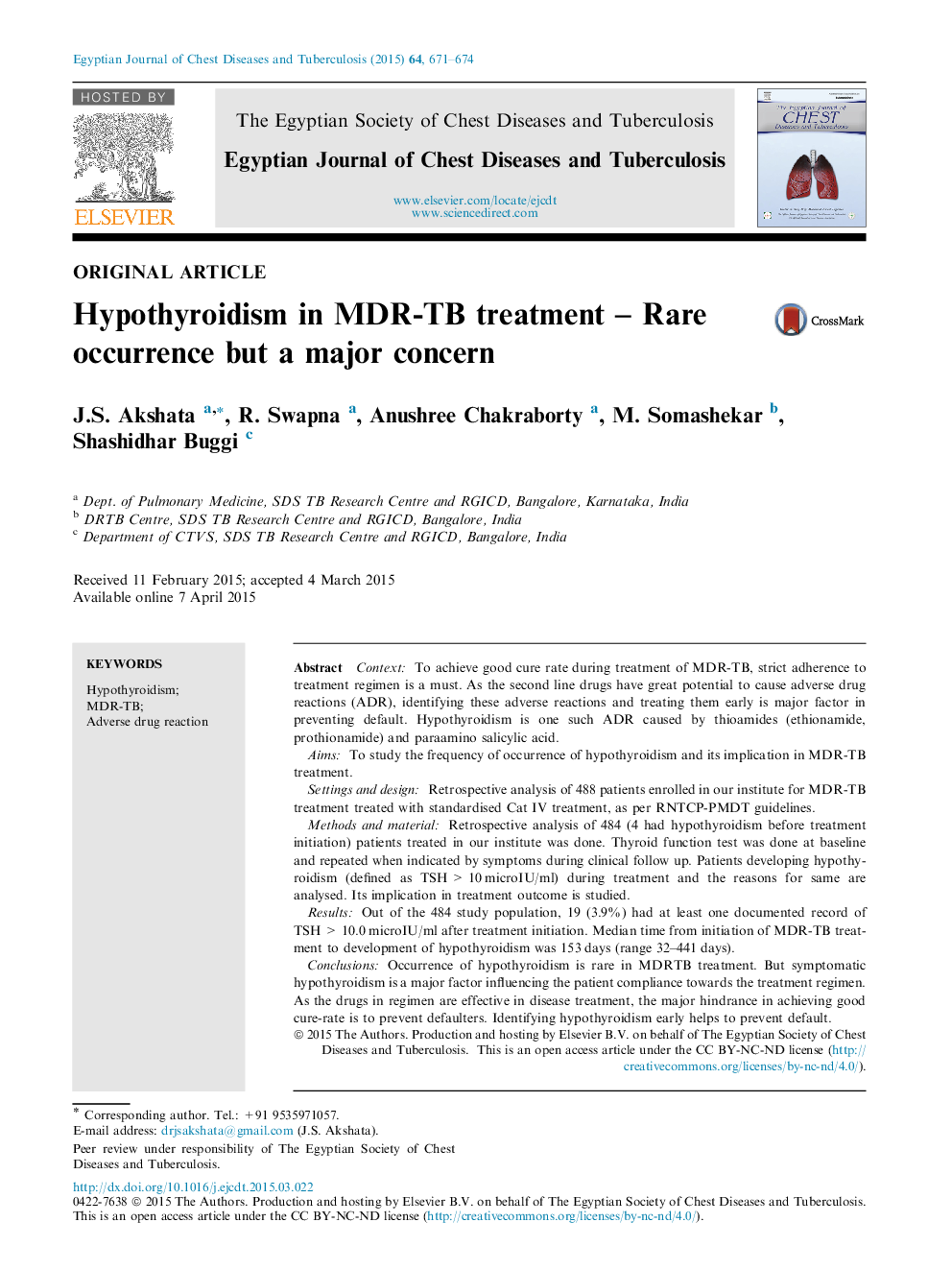| Article ID | Journal | Published Year | Pages | File Type |
|---|---|---|---|---|
| 3400029 | Egyptian Journal of Chest Diseases and Tuberculosis | 2015 | 4 Pages |
ContextTo achieve good cure rate during treatment of MDR-TB, strict adherence to treatment regimen is a must. As the second line drugs have great potential to cause adverse drug reactions (ADR), identifying these adverse reactions and treating them early is major factor in preventing default. Hypothyroidism is one such ADR caused by thioamides (ethionamide, prothionamide) and paraamino salicylic acid.AimsTo study the frequency of occurrence of hypothyroidism and its implication in MDR-TB treatment.Settings and designRetrospective analysis of 488 patients enrolled in our institute for MDR-TB treatment treated with standardised Cat IV treatment, as per RNTCP-PMDT guidelines.Methods and materialRetrospective analysis of 484 (4 had hypothyroidism before treatment initiation) patients treated in our institute was done. Thyroid function test was done at baseline and repeated when indicated by symptoms during clinical follow up. Patients developing hypothyroidism (defined as TSH > 10 microIU/ml) during treatment and the reasons for same are analysed. Its implication in treatment outcome is studied.ResultsOut of the 484 study population, 19 (3.9%) had at least one documented record of TSH > 10.0 microIU/ml after treatment initiation. Median time from initiation of MDR-TB treatment to development of hypothyroidism was 153 days (range 32–441 days).ConclusionsOccurrence of hypothyroidism is rare in MDRTB treatment. But symptomatic hypothyroidism is a major factor influencing the patient compliance towards the treatment regimen. As the drugs in regimen are effective in disease treatment, the major hindrance in achieving good cure-rate is to prevent defaulters. Identifying hypothyroidism early helps to prevent default.
